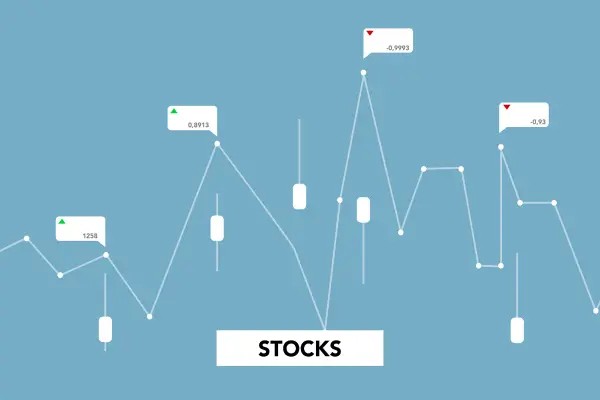Investing for the first time in the U.S. market can feel overwhelming, but getting started doesn’t have to be complicated. The key is to understand the basics, set clear goals, and start small. By choosing simple, diversified investments like index funds or ETFs, opening the right account, and investing consistently, even beginners can begin growing their wealth over time. With patience and a solid plan, anyone can take control of their financial future.
Understand What Investing Really Means

Investing is basically putting your money to work so it can grow over time, instead of just sitting in a bank account. One common way to invest is through stocks, where you own a small piece of a company. Your investment can grow if the company does well, or lose value if it struggles. Bonds are like loans you give to a company or the government, and you earn interest over time; they’re generally safer than stocks but grow more slowly. Mutual funds pool money from many investors to buy a mix of stocks and bonds, giving you built-in diversification, while ETFs (Exchange-Traded Funds) are similar but trade like individual stocks and often have lower fees. Understanding these basics gives you a solid foundation to make smarter decisions with your money.
Decide Why You’re Investing

Before you start investing, take a moment to ask yourself: why am I investing? Are you saving for retirement, planning a down payment on a house, or just trying to grow your wealth over time? Your answer will help guide your choices. If your goal is short-term (one to three years), safer options like bonds or a high-yield savings account make sense. For medium-term goals (three to ten years), a mix of stocks and bonds can offer growth while keeping risk in check. And for long-term goals (ten years or more), stocks and ETFs usually provide the best potential for growth. Knowing your “why” makes it easier to pick the right investments and stay focused along the way..
Also Read :- How Artificial Intelligence Is Shaping the Future of American Jobs
Make Sure Your Finances Are in Order

Before you dive into investing, it’s important to have your financial house in order. Jumping in without a solid foundation can be risky. Start by building an emergency fund enough to cover three to six months of living expenses so you’re prepared for unexpected costs. Next, focus on paying off high-interest debt, like credit cards or personal loans, since these can eat into any gains from investing. Finally, keep an eye on your budget to know how much you can comfortably set aside each month for investing. Once your finances are in good shape, you’ll be able to invest with confidence and peace of mind.
Understand Your Comfort with Risk

Investing always comes with some level of risk, so it’s important to know how much risk you’re comfortable with. This helps you stay calm when the market goes up and down. If you like stability and prefer slower, steadier growth, you might lean toward a conservative approach, focusing more on bonds and fewer stocks. If you’re okay with some fluctuations for the chance of better returns, a moderate strategy, a balanced mix of stocks and bonds could work well. And if you’re willing to accept bigger swings for potentially higher gains, an aggressive approach with mostly stocks and growth-focused ETFs might be right for you. Ultimately, your risk tolerance is personal, and there’s no one-size-fits-all answer; it’s all about what feels manageable for you.
Start Simple and Diversify

When you’re just starting out, the key is to keep things simple and spread your investments around to lower risk. Index funds are a great place to begin—they track the performance of a broad market or a major segment, like the S&P 500, and offer low fees with built-in diversification. ETFs work similarly but trade like individual stocks, giving you flexibility while still holding a mix of companies. For a hands-off approach, target-date funds automatically adjust your investments based on your expected retirement date. These options make investing less stressful, so you can grow your money steadily without having to pick individual stocks.
Open the Right Account

Before you start investing, you’ll need to open an account to buy and manage your investments. There are a few common options depending on what feels right for you. Traditional brokerage accounts let you choose and trade stocks, bonds, or ETFs on your own, giving you full control. If you’d rather have someone or something manage things for you, robo-advisors like Betterment or Wealthfront can automatically create a portfolio based on your goals and comfort with risk. For long-term savings, retirement accounts such as IRAs or 401(k)s offer helpful tax benefits that can make your money grow faster over time. Take some time to compare fees, features, and account types so you can pick the one that matches your goals and investing style.
Start Small, Stay Consistent

You don’t need a lot of money to get started with investing. Even small amounts, like $50 a month, can make a difference over time, especially since many brokers now let you buy fractional shares. The real secret is consistency—investing regularly, no matter what the market is doing, helps your money grow steadily. This approach, called dollar-cost averaging, takes the guesswork out of timing the market. Another way to boost growth is by reinvesting dividends, which means any earnings from your investments automatically get put back to work. Over time, even modest contributions can grow significantly, showing that steady, patient investing really pays off.
Keep Learning and Be Patient

Investing is a journey. Keep learning by reading financial news, books, or blogs. Review your portfolio occasionally, but don’t panic over short-term market swings. History shows that patient, steady investors usually do better in the long run.


